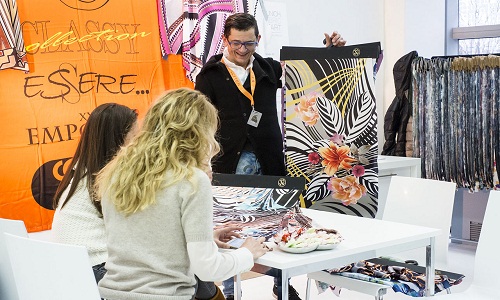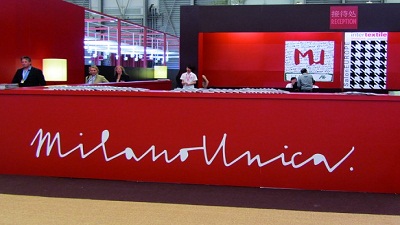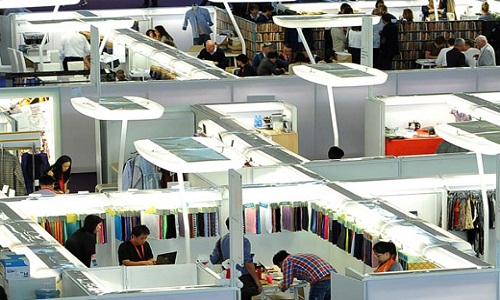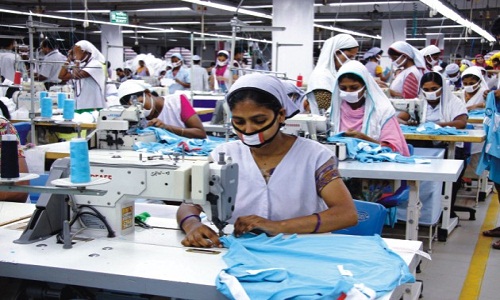FW
Japan’s economy shrank more than expected in the final quarter of last year. Consumer spending and exports slumped, adding to headaches for policymakers already wary of damage the financial market rout could inflict on a fragile recovery.
Gross domestic product contracted by an annualised 1.4 per cent in October-December. Exports to emerging markets are failing to gain enough momentum to make up for soft domestic demand.
Japan is the world’s third largest economy. Private consumption is especially weak. The economy is at a standstill. Private consumption, which makes up 60 per cent of GDP, fell 0.8 per cent.
With stimulus policies that give big manufacturers windfall profits, the country hopes to generate a positive cycle in which companies raise wages and help boost household spending. But the economy’s fundamentals remain strong. Capital expenditure rose 1.4 per cent. But it is doubtful whether the economy will gain momentum in coming months, with the recent market turbulence and slowing Chinese growth clouding the outlook for corporate profits.
Exports fell 0.9 per cent in October-December after rising 2.6 per cent in the previous quarter, underscoring the pinch companies are already feeling from soft emerging market demand. Domestic demand shaved 0.5 percentage point off GDP growth, while external demand – or net exports – added just 0.1 point.
Maharashtra has extended a capital subsidy to textile units that are self-financed. Earlier the subsidy was extended only to textile units that had taken bank loans. In addition, self-financed textile units in Vidarbha, Marathwada and North Maharashtra regions, which produce almost all of the state’s cotton, will also be eligible for 25 to 35 per cent capital grants from the state.
Maharashtra has come out with this policy to incentivise textile industrialists who are ready to put in their own money in their units. So far there were no incentives to take credit. The policy for self-finance makes sure that the promoter’s equity is raised. The initiative will give Maharashtra a competitive edge over other textile-heavy states like Tamil Nadu.
Meanwhile, 10 integrated textile parks are coming up in Maharashtra. These parks will be developed in Vidarbha, Marathwada and north Maharashtra, where cotton is produced. The targeted investment is Rs 40,000 crores in these parks which would generate more than 11 lakh jobs.
The state has reduced the premium on MIDC land to encourage investors to invest in these parks. One of these parks has come up at Nandgaon Peth in Amravati district in Vidarbha where Raymond Industries has signed an agreement for an investment of Rs 1,400 crores.
Pakistan’s textile sector is going through a crucial juncture. In the last year, 100 spinning factories and 500 ginning factories have closed down. The Trans-Pacific Partnership could give regional competitors such as Vietnam and Malaysia which are members advantages in trading with the US, Japan, Australia and other developed member countries.
The biggest threat to Pakistani textiles may come from Vietnam, which is the second largest textile exporter to the US and which will reap the benefits of reduced duties. The textile industry accounts for 60 per cent of Pakistan’s exports. Pakistan’s textile exports fell by nine per cent in the July-December period from a year ago. For the month of December, the decline was 12 per cent from a year ago. The textile industry in Pakistan wants a reduction in electricity tariff, refund on sales tax payments and a reduction of export taxes.
Yuan depreciation in the near term will aggravate the already depressed export situation in Pakistan, making Chinese exports cheap in the European Union and other regions. The textile sector in Pakistan needs to focus on innovation, do higher value addition in their products rather than exporting raw and semi-raw materials like cotton yarn and gray fabric.
Morarjee Textiles has ordered a fully automated production line from the German textile machinery manufacturer Zinser. Zinser makes ring spinning machines which can be used to produce all types of yarn, including short and long staple yarns, yarns made of natural or manmade fibers and blends.
Zinser is the only manufacturer to offer ring spinning machines for cotton and worsted spinning. The machines have triple added value in the energy, economics and ergonomics categories. The new ZinserRing 72 ring spinning machine can spin up to 25,000 rpm at all spindles. With up to 1920 spindles, the ZinserRing 72 produces yarn very economically. At a production capacity of 30,000 spindles, comprising roving frames, ring spinning and winding machines, production costs fall by nine per cent compared to machines with 1200 spindles.
Morarjee Textiles is a global leader in the production of very fine cotton fabrics. It operates in the premium segment. It spins over 1,000 tons of high grade cotton yarn annually. All of this yarn is processed in the company to create high quality fabrics and fashion garments for customers that include exclusive fashion houses in Europe and the US.
The first Zinser 72 machine to be manufactured in the new Zinser plant in India was ordered by Morarjee Textiles.
www.zinser.de/
"The fair exceeded all expectations. The show recorded a positive 6 per cent plus in visitor attendance. More international visitors came from the Netherlands, France, Spain and the US. Visitor attendance was also up from the Czech Republic, Poland and Switzerland. What was heartening was the positive response of small and medium producers to fashion innovations."

The 40th Munich Fabric Start witnessed significant rise in visitors with rise in international attendance. The fair saw a clear trend towards greater international presence both in terms of exhibitors and visitors. More than 950 suppliers presented over 1,500 collections for the 2017 Spring/Summer season.
Buyers focused on innovative products, sophisticated new developments and forward-looking high-tech and functional materials. Demand for more comfort and multi-functionality plus added value was visible across all product segments, from basics with a new finish to extremely lightweight wool materials with a coated reverse.

The fair exceeded all expectations. The show recorded a positive 6 per cent plus in visitor attendance. More international visitors came from the Netherlands, France, Spain and the US. Visitor attendance was also up from the Czech Republic, Poland and Switzerland. What was heartening was the positive response of small and medium producers to fashion innovations.
Bluezone and its changed concept
Boasting a surprising new design ‘The Bluezone’ and its changed stand concept met with a positive response from both exhibitors and visitors. Bluezone once again proved a resounding success. The quality of visitors was consistently high. Bluezone is about fine-tuning, new nuances and also about rounding off the collection with exciting novel items.
Oliver Hofmann of Bültel rates the altered Bluezone concept as positive: The look and feel of the Bluezone is very accomplished. The hall boasts of a beautiful entry and positively surprises visitors with its creative ranges. The new stand concept enhances the aspired business atmosphere very well; you can withdraw for concentrated work and yet meet for an exchange in the aisles.
Crowded Additionals
The growing international flair at Munich Fabric Start was underscored by attendance in the Additionals Halls, which were very busy on all three days of the trade fair. “In addition to high-caliber customers from Germany there were international contacts with business partners from Belgium, Holland, Denmark, Eastern Europe and Russia,” said Sven Oppermann, Union Knopf.
Design Studios
Creative hustle and bustle also prevailed at the re-staged Design Studios. In an open-plan and spacious workshop atmosphere 20 international design studios and trend offices showcased their latest developments in extraordinary prints, patterns and designs. Alex Hobley of Fusion CPH said, “We had a fantastic first day and the stream of visitors also remained quite stable on day two. Overall, the trade fair has exceeded our expectations. And the premises here have also convinced us 100 per cent.”
Alex Vogt of Kern Kommunikation said the conversations they had at the Eco Village went far beyond the theme of ecology. Visitors came with a purpose to work intensively with the fabrics on display. Serving as an additional attraction once again was the Organic Selection Trend Forums since they prove that sustainable fabrics have become mainstream. Experts representing certification bodies and associations on site were busy advising visitors. Discussions focused on topics like the availability of large quantities, questions on the stability of raw material prices and innovative material and print solutions,.
Trendworld Seminars
Presented by top-notch international speakers the Trend Seminars also met with great approval. Alongside the visionary and market-driven trend lectures presented by renowned trend experts, the lectures with a technical focus on innovative technologies as well as changed clothing habits and consumption were very convincing.
Furthermore, the elaborately designed Trend Areas and the Colour Forum in the foyer were used comprehensively as a basis for directional fabrics and colours. The overriding theme for all the elaborately staged fashion tableaux and stories was ‘Ageless’, the seasonal theme that doubles as an encouragement and challenge to re-define target groups, to go on a quest for new styles and part with conventions. Ageless reflects the longing for fashion that is detached from age, time and - occasionally also gender. The Trendworld already provided initial answers to this, demonstrating a new light-hearted approach to fashion based on a mix of fun, romanticism and relaxed chic.
In a nutshell, the fair organiser's concept met with strong approval. With the first presentation of the fabric collections for Spring Summer 2017 last December at the exclusive preview event ‘View,’ an informative basis for early collection planning had already been laid. This was complemented by three busy trade fair days which were largely used for final collection planning.
"Milano Unica XXII, Italian Textiles and Accessories Tradeshow witnessed two fold growth in exhibitors along with firm attendance. The recently concluded XXII edition of Milano Unica, Italian Textiles and Accessories Tradeshow, held from February 9-11 at Fieramilano city registered a significant overall increase, compared to the February 2015 edition in the number of firms that visited the Spring/Summer 2017 collections. Double digit growth witnessed for both Italian firms and foreign companies."

Milano Unica XXII, Italian Textiles and Accessories Tradeshow witnessed two fold growth in exhibitors along with firm attendance. The recently concluded XXII edition of Milano Unica, Italian Textiles and Accessories Tradeshow, held from February 9-11 at Fieramilano city registered a significant overall increase, compared to the February 2015 edition in the number of firms that visited the Spring/Summer 2017 collections. Double digit growth witnessed for both Italian firms and foreign companies.

This year’s event was preceded by an increase in number of exhibitors from 361 in last February to 371 this year. Foreign exhibitors totalled 72, in addition to 40 and 13 from the Japan and Korea Observatories, respectively. Therefore, the general total was 424, compared to 399 exhibitors recorded 12 months ago (+ 6 per cent).
Return of foreign firms
There was a significant and important comeback of Russian Federation as far as foreign firms are concerned. Double-digit increases also characterized European firms: Portugal (+33 per cent), Netherlands (+30 per cent), Great Britain (+27 per cent), Spain (+17 per cent), France (+15 per cent) and Germany (+14 per cent). Even the presence of U.S. firms grew (+4 per cent), while figures from Japan, Korea and Turkey remained stable. There was a significant drop in Chinese firms (-28 per cent), probably due to the Chinese new year holiday.
According to Ercole Botto Poala, President, Milano Unica, the XXII edition of the event was extraordinary for a number of reasons. First concerns an increase in the number of firms that visited our stands, which corresponded to general satisfaction among our exhibitors for the quality of business contacts made. Furthermore, he was delighted that it occurred during his period of presidency. “Even the idea of luxury should be updated to be synonymous with excellence, and not only exclusivity. Milano Unica will continue to be a tradeshow of excellence and creativity, presenting the finest of Italian invention to the world. Fashion begins with textiles and accessories, and Milano Unica will make it tangible, using modern-day instruments, from mood boards to social technology, communicating by means of emotions and sensations,” he says.

In September, Milano Unica teams up with Japan and Korea Observatories to launch ‘Origin Passion and Beliefs’, an exhibit dedicated to suppliers of fine quality semi-finished products ‘Made in Italy’, promoted by the Fair of Vicenza. Moreover, two days out of three, we will be in synergy with Lineapelle, the international tradeshow specializing in leathers, accessories, components, fabrics, synthetics and models. “This goes to prove that creating a network is not only through words but through facts,” says Poala.
Massimo Mosiello, General Manager of Milano Unica points out they are currently thinking about the IX edition of Milano Unica China (Shanghai, March from 16 to 18, 2016 and, above all, Milano Unica XXIII, scheduled for September 6-8, 2016, and will present Fall/Winter 2017-18 collections at the Rho-Pero headquarters of Fiera Milano. “As for Prima, scheduled for July 6-7, 2016, we have informed our exhibitors that we prefer Fieramilanocity, and will send confirmation as soon as we reach the number of exhibitors equivalent to the July 2015 edition”.
Glittering inaugural performance
The evening of the inauguration ceremony was characterized by a spectacular performance by Gloria Gaynor, disco music icon, accompanied by an 11 piece orchestra, who interpreted some of her greatest hits including “I Will Survive”, “I Am What I Am” and “Never Can Say Goodbye”. The evening began with a dialog between journalist Simone Marchetti and Ercole Botto Poala, President of Milano Unica. The topics included new trends of change and the project for the future Fair at the Rho-Pero headquarters, which will develop into a unique event, with a uniform layout and functional combinations to further facilitate fair visitors.
"Première Vision Paris, the global event for fashion professionals will kick start on February 16-18, 2016. Premier Vision plays on solidity, strengthening the transversality of its activity sectors to serve the global creative fashion industry. Ever since becoming the sole organiser of Première Vision Paris, Première Vision has had a clear goal to promote and coordinate its various activity sectors in all their diversity, with an eye to helping them complement each other's activities, all within the context of a single, harmonious, more effective event"

Première Vision Paris, the global event for fashion professionals will kick start on February 16-18, 2016. Premier Vision plays on solidity, strengthening the transversality of its activity sectors to serve the global creative fashion industry. Ever since becoming the sole organiser of Première Vision Paris, Première Vision has had a clear goal to promote and coordinate its various activity sectors in all their diversity, with an eye to helping them complement each other's activities, all within the context of a single, harmonious, more effective event. Through strategic changes and restructurings, Première Vision Paris is able to meet the expectations of increasingly demanding international markets, and the needs of a growingly transversal creative fashion industry. The highlights and features of the Premiere Vision Paris 2016 ae:
Activating the fashion value chain

As a part of its new Smart Creation Program, Première Vision highlights new competitive values serving the entire fashion value chain. With the participation of industry experts and professionals, this Smart Conversation will present innovative, intelligent and more responsible solutions and means, ranging from production of materials to the creation and manufacturing of the final product. A discussion on Smart Conversation will look at the results of an exhibitor-wide survey launched by Première Vision last July. The survey was created to better understand and communicate exhibitors’ initiatives and commitments in terms of sustainable production processes and responsible sourcing: the Smart Facts. Chantal Malingrey, Director of Marketing and Development at Première Vision, will present an exclusive look at the key figures and an analysis of the results of this study.
The new panorama of global sourcing
In the framework of the chair launched jointly with IFM (French Fashion Institute) concerning ‘The economy of creative materials for fashion,’ Première Vision is organizing a conference on the new panorama of global sourcing. Developed from a study conducted by IFM, it provides an analysis of the mapping of global sourcing, comparing the EU with the US, with a focus on France. The study will highlight countries that are seeing their importance increase in EU and US clothing imports, and those that, in contrast, are seeing their positions erode. In preamble, the conference will examine the main determinants of sourcing, namely labour costs in the supply countries, changes in the cost of raw materials, and changing exchange rates.
The study will also take a look at near sourcing (Europe, Eastern European countries, Mediterranean countries), focusing on what proportion it represents in terms of European supplies. In doing so, it will be possible to measure the impact of the rise in dollar on the distribution of supplies (local sourcing vs. overseas imports). Through a survey conducted by the IFM at the end of 2015, forward-looking elements will also be highlighted, including upcoming changes in the procurement practices of brands and distributors. Finally, the conference will take a look at Turkey, now an essential country for fashion industry: its economic conditions, the sourcing issues, and changing costs (labour, products etc.).
Trend seminars
![]()
These seminars general and transversals will present the season’s influences, the major transversal currents and the various complementarities existing between fabrics, leathers, patterns and accessories.
Entirely dedicated to the colour ranges, this colour trend seminar offers a thorough reading of the seasonal highlights, proposals for colour harmonies by market, and complementary uses of colour to create the best silhouettes, from clothing to accessories and shoes.
The trend seminars will provide quick guide to buyers in their product choices, discover the fabrics trends. An essential tool for spotting the season’s indispensable fabrics, with a focus on: fashion for the season and its key influences; fashion stories illustrated with inspirational images, photos of the season’s symbolic fabrics and patterns. The season’s key silhouettes for men, women, casual wear and sports.
The leather fashion breakfast
Among the fashion seminars are the Leather Fashion Breakfasts, held daily. These seminars present the trend concepts for Spring/Summer ’17, as well as the season’s key colours, products and materials for the leather and fur markets. It also presents a special focus on latest news spotted and gathered from show’s exhibitors.
For its second edition at Première Vision Leather, Sound Box will be producing new vibrations, echoing the concept of this season’s Trends Gallery ‘Beauty, my beautiful concern’. Artists and designers will reveal their vision of the ‘instability of beauty,’ their universe and their perspective through words, images and sounds. The creator Maroussia Rebecq will explain how to approach fashion in a completely new way. In her workshop, ‘the VW Factory,’ designer Victoria Wilmotte will explain the importance of making her own prototypes. Surrounded by his works in his studio, the painter Errò will talk about his vision on beauty. Dancer-choreographer Mié Coquempot muses out loud while dancing to the silent score of the Art of Fugue by Bach. And make-up and mixed media artist Annabelle Petit will demonstrate and comment on her vision of make-up and the beauty of imperfection. Hall 3 Events, happenings, special meetings...all through the aisles, discover surprises and news at the international show of leather and fur experts.
"BGMEA’s roadmap gets special importance for achieving a near double-digit export growth in the calendar year, 2015. Global focus is on working conditions in the readymade garment (RMG) factories in Bangladesh. Quite clearly these essential conditions are to be addressed for the 2021 roadmap. Nevertheless, certain enabling conditions are to be addressed even for sustaining the present trend of success in export."

Ranging from infrastructural issues to impact of changes in the global trade regime, the challenges faced by Bangladesh’s RMG sector have many dimensions. On issues beyond infrastructural impediments, a coordinated approach by different stakeholders within the Bangladesh government and private sector requires to start immediately. To increase its annual export of readymade garments to $50 billion by 2021, the Bangladesh Garments Manufacturers and Exporters Association (BGMEA) have chalked out a roadmap. A recent roundtable in Dhaka outlined the conditions to be fulfilled to attain that 'ambitious but possible' goal.

BGMEA’s roadmap gets special importance for achieving a near double-digit export growth in the calendar year, 2015. Global focus is on working conditions in the readymade garment (RMG) factories in Bangladesh. Quite clearly these essential conditions are to be addressed for the 2021 roadmap. Nevertheless, certain enabling conditions are to be addressed even for sustaining the present trend of success in export.
Second sustainability compact review
In January the second review of Sustainability Compact was held in Dhaka. Senior officials of the ministry of commerce, labour and employment and ministry of foreign affairs and senior officials from the European Union (EU), US and International Labour Organisation (ILO), along with representation from the governments of Canada, the Netherlands and UK participated in the meeting. The review meet recognised the need for further improvement in six areas of which four are on the rights of workers and two on inspections and remediation of RMG factories identified with different degrees of fault in their structures. Clearly this finding stressed more on improvement in the legal regime protecting the rights of the workers. With 85 per cent share of total RMG export from Bangladesh (woven and knit with equal share) going to the EU, US and Canada, the Compact mechanism deserves highest importance to plan any ambitious target.
Perils of moving up development ladder
Bangladesh’s exports to the EU will face new challenges as it is graduating from the LDC status. First, Bangladesh will lose unilateral duty-free access and come to be within the general GSP. Secondly, Bangladesh will miss relaxed rules of origin enjoyed as an LDC. For the RMG sector, it means, importers will pay most part of the standard duty when importing from Bangladesh. Again, GSP is given for RMG products, only if the fabric is produced in Bangladesh. Even if Bangladesh applies for GSP+ and starts receiving duty-free access, the rules of origin for general GSP will be applicable; unlike the relaxed rules for the LDCs. Bangladesh will also be required to comply 27 UN/ILO Conventions instead of 15 for the LDCs.
Another immediate challenge before Bangladesh RMG exports is the new GSP administration in export to the EU. Currently, Export Promotion Bureau (EPB) is the only competent authority to issue GSP certificate for RMG factories. From 2017 or 2020, depending on the decision of Bangladesh, all GSP certificates for the EU will be issued by the exporters.
Worries before RMG sector
Bangladesh’s RMG sector is worried that its competitors like India and Vietnam will benefit more with free trade agreement (FTA) with the EU. The Trans-Pacific Partnership (TPP) is also causing apprehension that RMG exports to the USA will be negatively affected. Bangladesh does not enjoy any preferential access under GSP or any other system in the USA for apparel products. But losing out to Vietnam in export to the USA and EU under FTA is unlikely to happen in the short term. The ‘Yarn forward Rules of Origin’ in the TPP will be a major impediment for Vietnam to enjoying duty-free access for its apparel products. It means all products in a garment factory from the yarn stage forward must be made in one of the countries that are party to the TPP agreement.
As a condition to boost exports to reach the envisaged target by 2021, Foreign Direct Investment (FDI) in RMG sector has been identified at the BGMEA Roundtable. However, BGMEA and BKMEA have been lukewarm towards encouraging FDI in the RMG sector. During the Multi-Fiber Arrangement (MFA) trade regime under the World Trade Organisation (WTO), Bangladesh discouraged FDI in RMG sector to prevent its competitors to use the quota enjoyed by Bangladesh.
The sooner Bangladesh takes over its exclusive responsibility in monitoring, coordinating and enforcing the 'National Tripartite Plan of Action on Fire Safety and Structural Integrity in RMG sector', it will be easier to withstand pressure which are perceived now as unfair.
Jaya Shree Textiles (JST) is looking at increasing its linen business by 8 to 10 per cent in 2016. JST a part of the Aditya Birla group expects to earn Rs 800 crores revenue from its linen business with an EBITDA of 11 to 12 per cent while another Rs 700 crores will flow in from its woolens product line.
The company imports its linen from Europe and processes it into fabric and apparel under the brand name Linen Club. Presently fabrics contribute to 96 per cent of its revenue while the rest comes from its apparel line. Operating in the Rs 1,500 crores niche linen market, the company commands a market share of 50 per cent in pure linen textile which is pegged at Rs 900 crores.
Apart from its focus on the domestic market, the linen fabric maker is also eyeing for expansion into Bangladesh, Sri Lanka and the Middle East. Linen Club has 127 exclusive stores, which will increase to 134 by March 31 this year while another 40 will be added during 2016-17. Apart from increasing its exclusive store count, the group is also aggressive on the retail outlets. It has been adding 300 to 500 stores every year and will continue at this pace.
www.jayashree-abnl.com/
Cambodia’s garment and footwear exports recorded a growth rate of nearly 6.7 per cent when compared with the year before. Nearly 80 new garment and footwear investment projects were approved in 2014. These investments represented 28 per cent of the total newly approved investment in fixed asset value in 2014. However there was a slight drop in investment during the first half of 2015, when compared with the same period in 2014.
Exports have been growing for the past 15 to 20 years in Cambodia continuously. And last year was no exception. The country’s garment exports rose to 5.7 billion dollars in 2015, up from US 5.34 billion dollars in 2014; while footwear exports generated 538 million dollars in receipts, up from 441.4 million dollars the year before. Textile exports contributed a marginal 48 million dollars.
The European Union is the biggest buyer of Cambodian exports, accounting for 2.5 billion dollars of the total. The US imported 2.48 billion dollars worth of garments from Cambodia in 2015.
The garment and footwear industry in Cambodia is expected to continue to grow in 2016. Growth in employment, exports and factory openings are all helping to dispel concerns that rising minimum wages would cause the sector to falter.












